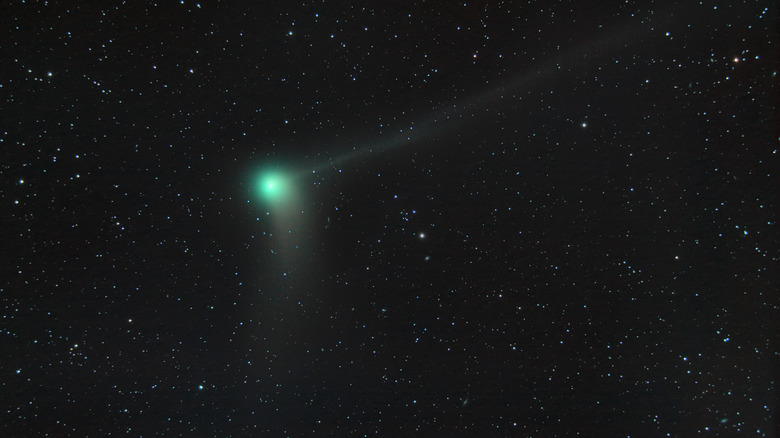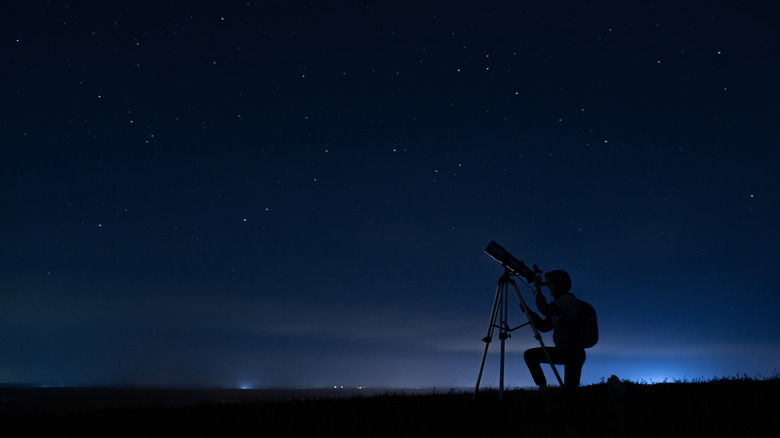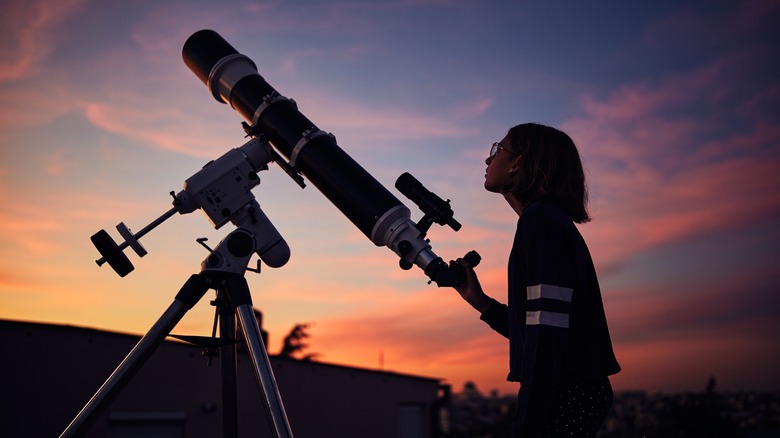The Green Comet: A Once-In-50,000-Years Astronomical Phenomenon
In a sense, the night sky is entirely predictable and largely unchanging. The stars and planets do their dance across the universe as they always have, and for a few centuries, humans have understood those movements, meaning we can predict things such as eclipses, transits, and other cosmic events. However, from time to time our corner of the solar system will be visited by less-predictable visitors — comets, which are constantly zipping around through space, and sometimes, they can even be seen with the naked eye. Some of them have been downright spectacular, such as the Hale-Bopp comet, which passed through town in the 1990s.
Another comet is headed toward our celestial neighborhood, and it's likely to be a doozy. As The Weather Network notes, comet C/2022 E3 (ZTF) has such a large orbit that the last time it was seen by humans, Neanderthals shared the Earth with humans (around 50,000 years ago). Also, it may be bright enough that it can be seen with the naked eye, although as Parade reports, the jury is still out on that — although it will definitely be visible to those with cheap backyard telescopes or even off-the-shelf binoculars. And, better yet, it's green!
A green comet?
Comets are usually, like stars and galaxies and other objects in the universe, a sort of pale white. Not so for C/2022 E3 (ZTF): this one is green. Or perhaps more accurately, the human eye will perceive it as green.
As Parade explains, comets are, in essence, a lump of rock and/or ice followed by its "tail," itself made up of rock, dust, and/or ice. Mark Hammergren, astronomer and president and CEO of Farther Horizons LLC, discussed things with WTTW and explained how this comet was able to take on a green hue. "Most comets that show a pretty strong gas emission coming off, they'll have that same hue to it. And that green comes from emission lines of excited atoms of carbon actually — carbon and hydroxide ion. These all shine very brightly in the blue, some in the ultraviolet [range], some more in the green," he said.
As Universe Today explains, comets, when they have any "color" at all, will have colors in the blue-green range of the spectrum, for complicated reasons having to do with the interplay of light and the chemicals within a comet and its tail. That means that the red comet of "Game of Thrones" is likely to never happen.
How to see the green comet
As of the time of this writing, the jury is still out on whether or not Comet C/2022 E3 (ZTF) will be visible to the naked eye, although it will almost certainly be visible with even the weakest telescopes and binoculars.
If you're in the northern hemisphere, you should be able to spot the celestial visitor beginning January 12, according to EarthSky. Around midnight, look low on the northeastern horizon. As it approaches its closest point to Earth on February 1 and 2, it should be higher in the sky; look for it near the North Star, earlier in the evening. It will be most visible in the morning sky, according to Parade.
Stargazers in the southern hemisphere will still get their chance, but they'll have to wait a few weeks, according to WLS. It will be most visible to those on that half of the Earth in early February.


